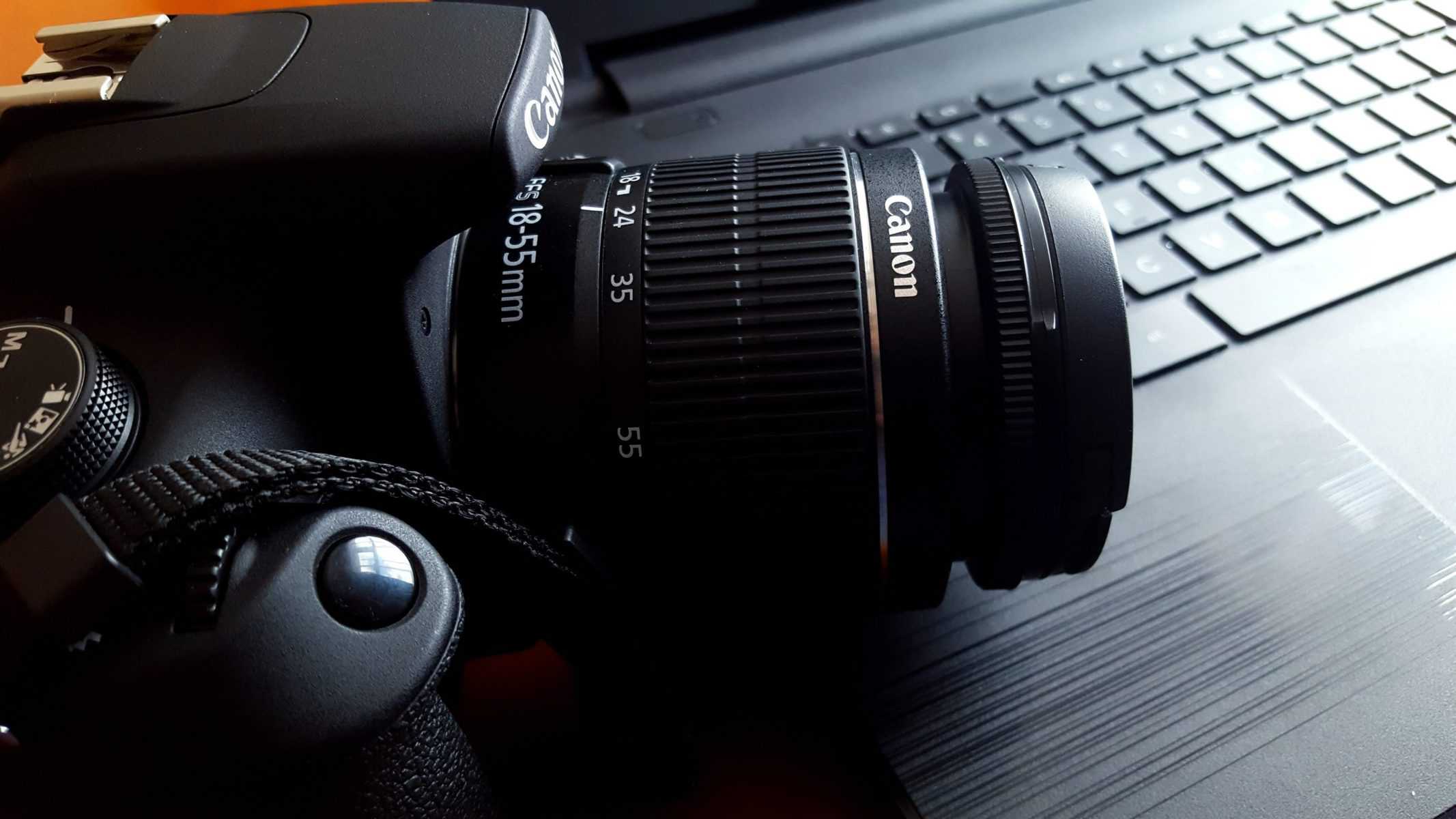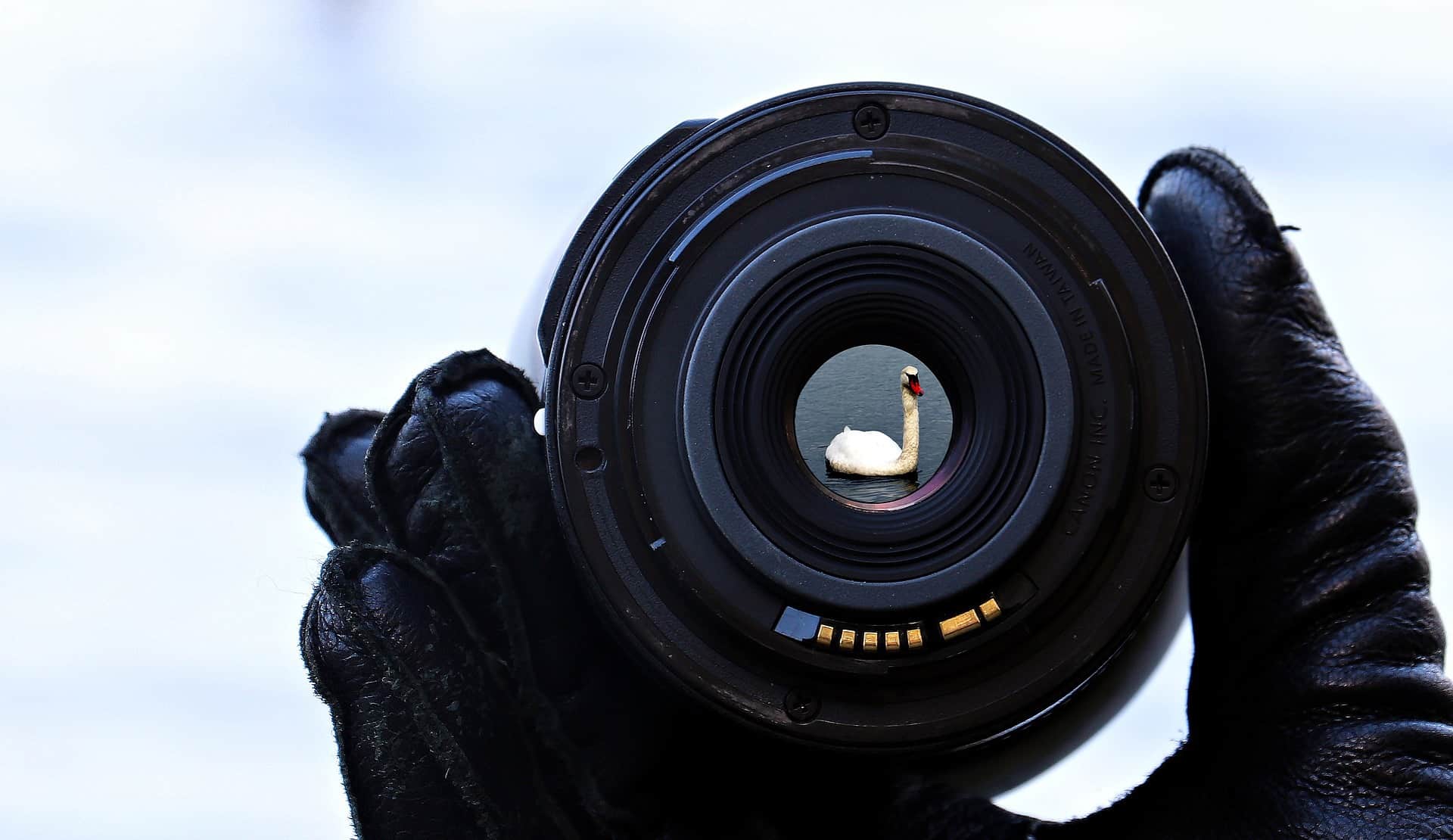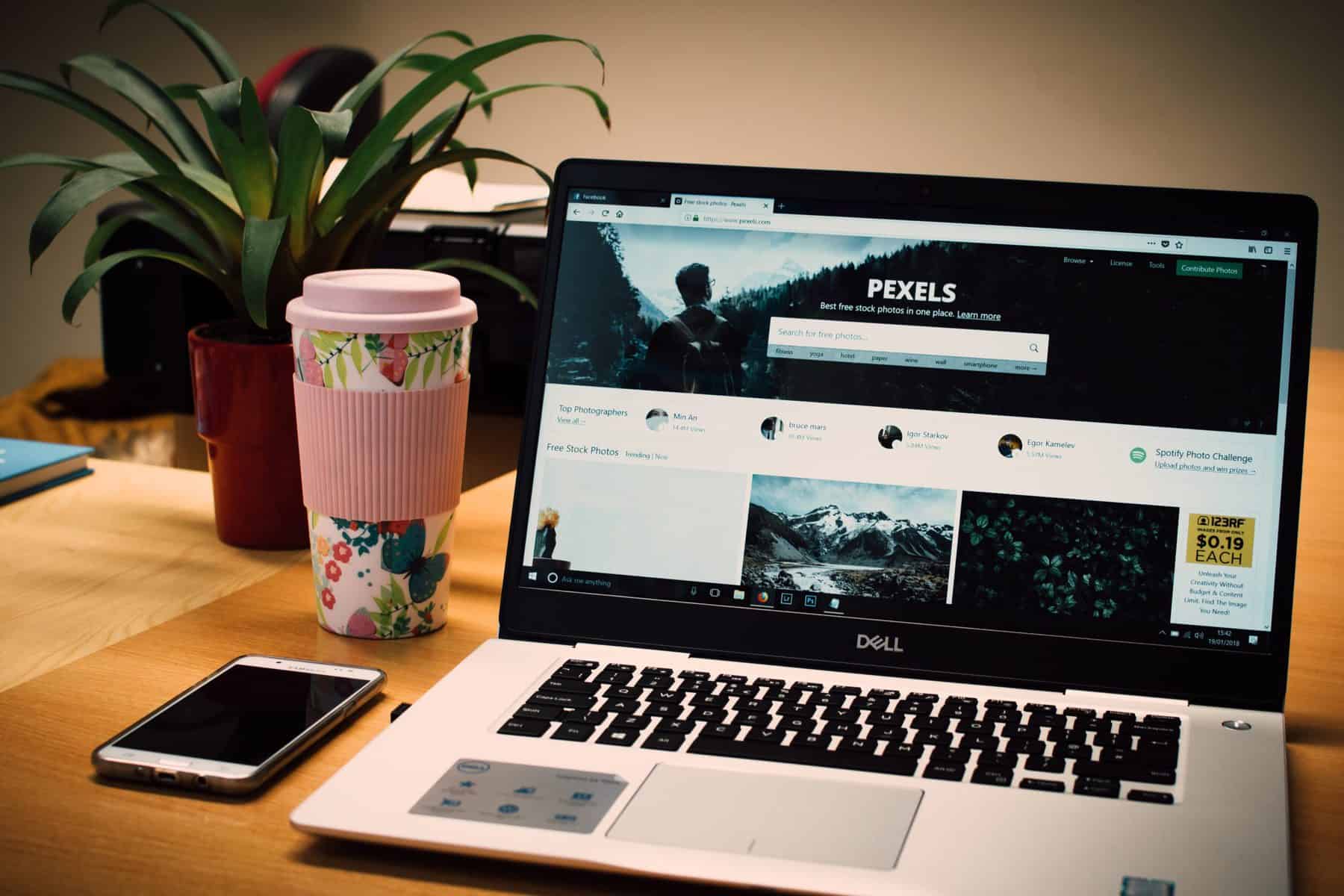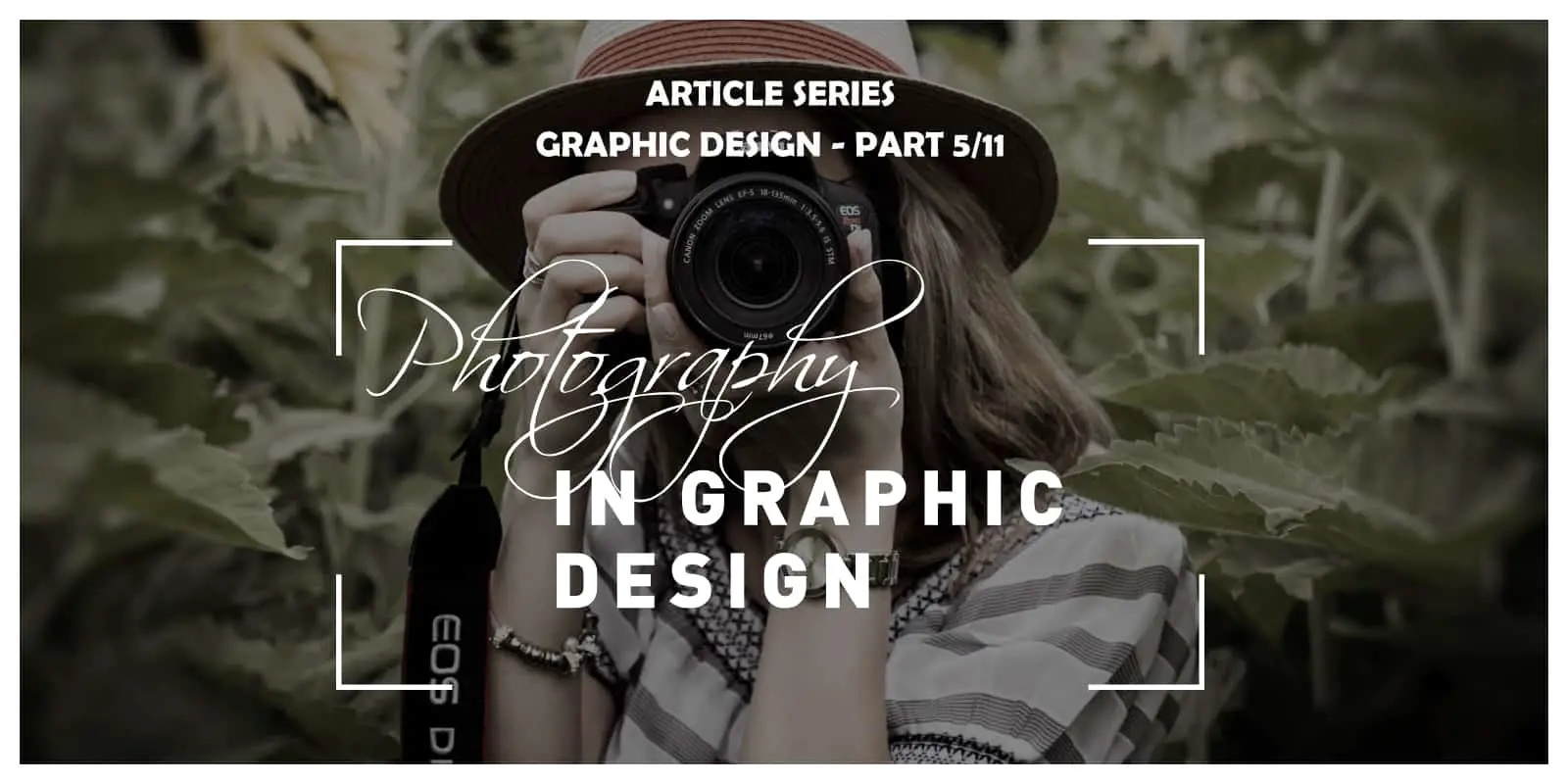Photography in Graphic Design is the fifth article in the Ultimate Graphic and Web Design Basics Guide. It was meant for those looking to get their career started as designers, but also for those that are interested in the design process. Within the following series of the nine articles, and two “bonus tips” articles, we will cover everything you need to know to get started. Stay tuned for the following articles:
- The Basics of Graphic Design: What It Is, and What’s It For?
- Color Theory & Psychology
- Typography: How to choose the proper font
- Layout & Composition
- Photography in Graphic Design
- Branding & Logo Design
- How Graphic Design Translates into Web Design?
- User Experience – How to get it right?
- Modern Trends in Design
- Bonus tip: How to find your first gig
- Bonus tip: How to work with clients
Stay tuned for the full series!
Photography, for some, it’s a hobby for others a profession, but for all of us, it’s a way to express ourselves and forever freeze a moment in time artistically. It might be fun but it for sure isn’t easy. To be a good photographer, you need more than just a good camera, you need a bit of raw talent along with practice, training, and experience. Photography is not just taking photos; it is also about selecting the best ones and editing them to their fullest potential. Besides being a discipline and art form on its own, photography is a staple in many other forms of art. In this article, we are going to talk about the role it plays in the world of graphic design.
Although there are plenty of beautiful and effective designs that don’t contain any images, there is an even bigger number of them with photos. But why?
People are visual beings, and the easiest way to get their attention is by stimulating the visual senses. That is why it is a rare case to find an advertisement or magazine article with no photos. An image can say more words than an article it is placed next to; it will easily cross any cultural and language barriers while texts can sometimes struggle to do so. In order to use the power of images to its fullest potential in your designs, you have to keep in mind that they have a different effect on each individual, so its best to use images that set the tone for your message but are still open to interpretation. To put it more simply, just avoid using literal and generic images.

How to include images in graphic designs
After you have found the perfect photo for your design, you have to find the perfect way to incorporate it. Depending on your skill level and creativity, there is a huge number of ways you can do that.
As a background – Using a photo as a background of your graphic designs has a number of perks. It can provide a unique texture or pattern as your background when you make it fade out. When using photos like this, make sure they are fairly simple, as a background should be. A photo as a background paired with an interesting placement of typography can make it seem as if your background and headline are interacting with each other, this is a hit in designs for marketing. Also, the composition of your background image can provide you with unique ideas as to where to place your content.
As a visual and realistic representation – Often, the message you want to send is quite straightforward, a photo can be the best tool to express it. Illustrations can be amazing for your design too, but sometimes a realistic touch is exactly what your design needs.

As a focal point – The basic rules of layout and composition in graphic design tell us that every design should have a focal point, something to attract and hold the attention of the viewer. It can be anything that’s interesting and bold enough, an illustration, text, or you guessed it, a photo.
As an inspiration/foundation for your design – Sometimes, the things we see from real life are something we want to depict in our graphic design, a person, a landscape, whatever. You can use a photo as inspiration for a whole new design. Another interesting thing to try is to design around the photo, have it be the foundation of the design, you don’t have to always design over it.
As borders and pops of color – A fun way to spice up your design in an interesting way with images could be using them as borders and/or design elements that will provide a pop of color here and there.
Things to keep in mind
Now that you have a few ideas on how to incorporate photos in your design, there are a few things you might want to pay attention to when doing that.
If your design spreads across multiple pages, the images you use should be consistent, giving a sense of harmony to the whole design.
Don’t stop at one image. No one ever said you should or can use just one image, use as many as you want, to create the design you want. Maybe even make them into a collage, there are no limitations when it comes to design ideas.
The images you find might be perfect, but not necessarily fit perfectly in your design. Fear not, photo editing is a thing. Images can be altered to fit your needs, crop them, rotate them, zoom in on them, cut them in a specific shape, or anything else that might cross your creative mind.
Stock images
Finding the “right one” is hard in a lot of areas of life, the same goes for finding an image for your design. The best option would be to have the necessary photography skills and resources to capture exactly what you want by yourself, but that often isn’t the case. Luckily, we have stock images to help us out with that.
The name of these images is pretty self-explanatory, these images are in abundance and not hard to get ahold of. They can be used for any use, commercial, editorial, entertainment, artistic, anything requiring an image to enhance its effectiveness and appearance.

A stock image is all rights-cleared, which means you won’t be fined or taken off the internet if you decide to use one, no legal issues coming your way (we’ll get into those later).
Why should you resort to stock images? Like I said, taking images takes time and skills. Not everyone is lucky enough to have those. Stock images resolve that issue by being well-captured and edited images right there at your disposal. They will also save you money. Photographers are professionals who put a hefty price on their work. To do their job, they also take time, while stock images are there ready, just waiting for you to use them. Stock images can be completely free or come at a certain price, all depending on their type, quality, level of usage rights, and more.
Types of stock images
Royalty-free – When you get a license for a royalty-free image, that license doesn’t have an expiry date, there is only a certain number of times you can use that image. These images aren’t exclusive just to you, but they can be market frozen if that is something you need.
Rights managed – These images come at different price points depending on their size, exclusivity, and the way they are going to be used. They can be made exclusive to you, but they provide one-time rights for a photo.
Public domain – A public domain image is free regardless of the usage purpose. There is no limit on the times you can use it, or a need to obtain a license in order to use it. Images that fall into this category are usually work that no one has copyrighted or work that no one has no exclusive intellectual rights on anymore. Once in the public domain, these images can’t be copyrighted, so you don’t have to be worried about that. Some stock agencies provide free images through non-exclusive licensing.
A few of the most popular stock image sites are Getty Images, Adobe Stock, Shutterstock, 500px, and more.
Legal things to look out for when using images in your design

We live in a digital age where all digital property is protected, as it should be. After all, that is someone intellect and creativity coming to life. A violation of copyright laws is heavily punished in almost all modern countries, although the severity of the violation and punishments will vary from country to country. In order to avoid getting into trouble with the law when using or taking images, here are some things to keep in mind.
Don’t mix up images that are public domain and the ones that are not. A public domain image can be easily recognized by the Public Domain Mark 1.0 or the CC0 1.0 Universal Public Domain mark.
Use images that have a Creative Commons license. The photographer of these images has given them to the public, but still has some control over them. These images are categorized into ones for commercial and non-commercial use.
When using images of people without their consent, it is usually okay for editorial purposes, but not for advertising. The people in the images have the right to profit, and if they wish, remove that right from someone else.
Don’t use images containing logos, symbols, devices, names of companies. If they happen to be in one of your images, they have to have a trademark, service mark, or a registered trademark in the image.
Avoid images found on google. These images might not have a watermark, but they are still someone’s intellectual property. The number of images you use illegally doesn’t matter; one is enough to get you in big trouble. Why get yourself into a situation to pay thousands in fines for something that could be sold for only a few dollars.
Conclusion
Hopefully, this article reassured you that using photos in your designs should be something to consider. Graphic design and photography are both amazing forms of expression, so why not combine them and create art that will be a fusion of both. Take your own photos or make use of somebody else’s creativity. Whatever you choose, just do it the right way, we wouldn’t want all this legal knowledge you gained through this article to be for nothing.

